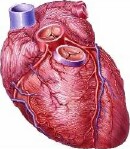
WEDNESDAY, March 24 (HealthDay News) — A new generation of flexible, miniaturized devices that stick onto organs promises better diagnosis and control of medical conditions ranging from heart problems to epilepsy, researchers report.
For example, “in the heart, we could do cardiac mapping and get rid of areas of arrhythmia much faster than is now done,” explained study author Dr. Brian Litt, an associate professor of neurology and bioengineering at the University of Pennsylvania. “In the brain, we could treat movement orders and epilepsy with finer control than ever before.”
The technology might also be useful in monitoring a variety of other organs, the team said.
The new technology uses electrodes flexible enough to stick and hold to wet human tissue — “like putting a thin film of cellophane on the heart,” Litt said, and small enough so that there can be 300 contacts per square centimeter of tissue.
Electronic medical devices such as pacemakers that are currently in use keep all their electronic circuits inside a container that is typically distant from the area being controlled or monitored.
In contrast, the systems now being tested in animals have wires running to hundreds or thousands of tiny electrodes that are magnitudes smaller than those seen in devices today.
One possible goal is a new kind of pacemaker that will allow for better control of abnormal heart rhythms. “We think we can find [arrhythmias] quicker, with a thin, larger flexible patch over the heart,” Litt said. “We could measure rhythm all over the heart at one time.”
The devices are being developed in a collaboration between physicians and engineers at the University of Pennsylvania, the University of Illinois and Northwestern University. They reported their findings in the March 24 issue of Science Translational Medicine.
“By integrating silicon transistors, we can combine signals and use fewer wires to connect these electrodes to external instruments,” said Jonathan Viventi, a graduate student at the University of Pennsylvania, who is due to gain his doctorate next month and who leads a group developing the systems. Their report describes a device capable of measuring electrical activity in the hearts of pigs, animals often used in such research.
The device has more than 2,000 closely spaced electrodes that are flexible enough to fit around the curving surface of the heart, with electronics engineered to operate in the salty environment of body fluids.
“These are flexible electrodes for medical applications, where it is necessary to work with body tissues of irregular shape,” Viventi said. “There are other devices with flexible displays. One prototype device can have a reader with a fold-up screen. We are trying to approach the microscopic dimensions that the body works in.”
The devices are approaching the level where they might be commercially produced, Litt said. “We have done proof-of-principle testing in pig hearts and also are testing in the brains of other large animals,” he said. “We may be able to create a new generation of devices that can map the brain so that we can see where disordered networks of brain cells are. We have other papers in process.”
More information
There’s more on the heart’s electrical function at the U.S. National Heart, Lung, and Blood Institute.

